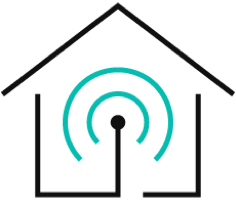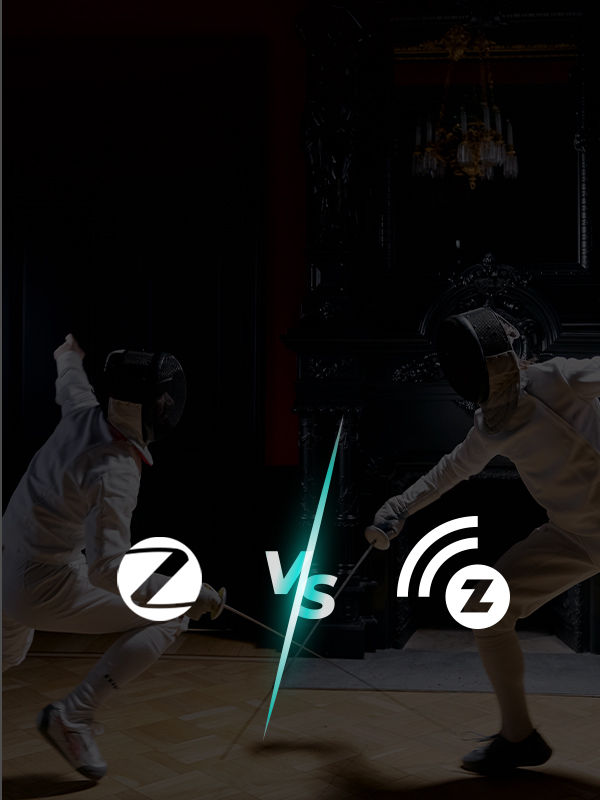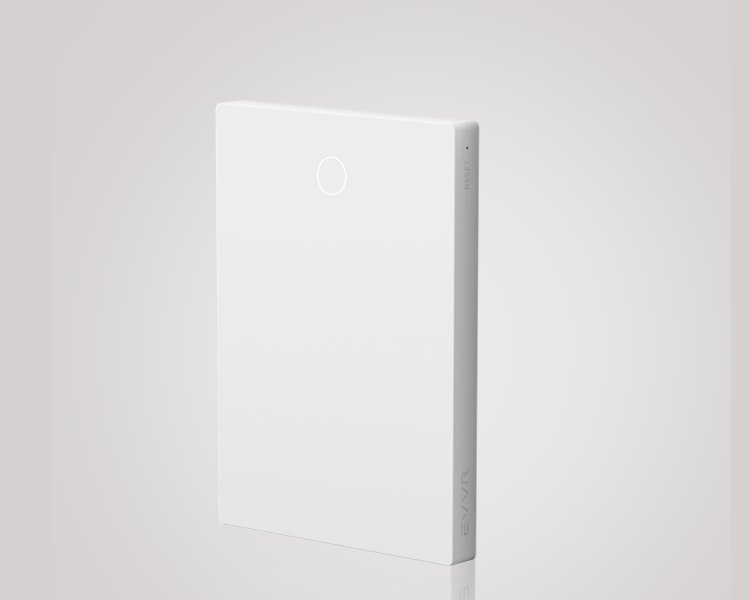As you start to make decisions about what to include in your smart home, like sensor automation and which smart lights to get, it’s important to know the difference between the various types of technology that you’re buying. The world of smart home device management can be a bit confusing if you’re not well-versed with industry lexicon.
In fact, you may have already noticed a few peculiar terms floating around as you’re doing your research: alien-sounding words like Zigbee and Z-Wave.
Have no fear! Here, we’re going to walk through what the differences between Zigbee and Z-Wave are and which one you should choose for your new smart home.
Zigbee vs Z-Wave
- What is a mesh network?
- Why do smart devices use mesh networks?
- What is Z-Wave?
- What is Zigbee?
- Functionality differences Zigbee vs Z-wave
- Choose the Zigbee remote switch with EVVR
What is a mesh network?
A mesh network is a network made up of a group of devices that create their own network of communication. Using its own Wi-Fi sources, called points, a mesh network allows its devices to talk to each other independently.
Instead of having Wi-Fi distributed from a single point of origin like a router, a mesh network is less central and more widespread. This method is preferred for smart devices, especially because they won’t have to rely on one source of communication in order to work properly. By constantly sending messages to other devices within the network, your smart home devices will rarely have a moment of downtime.

Why do smart devices use mesh networks?
More coverage in more areas
Since each smart device in a mesh network operates on its own nodes of Wi-Fi, your devices will have more coverage in places that may otherwise get bad Wi-Fi signals. Smart devices placed in hallways, corners and places in your home far away from the router can all receive better signals to operate with a mesh network. No matter your home’s architecture, know that your smart devices will be able to communicate with one another.
More uptime
A mesh network of devices doesn't have to rely on a single router to do their job. This means that if one smart device goes down, communication between the other devices still works because of the network’s decentralised nature.
Easier communication between devices
Because of how many different communication pathways there are in a mesh network, you can rely on devices to find the more direct path to reach one another. Your smart devices will be able to react quicker, transfer messages faster and improve their productivity.
What is Z-Wave?
Z-Wave is a type of mesh network that is used for many smart home devices. By using low-energy radio waves to communicate between devices, Z-Wave products work together without needing to use Wi-Fi to get the job done.
For over 20 years, Z-Wave devices have existed to make smart home automation work through its simple setup. The more devices that you own with Z-Wave technology, the stronger your network becomes. With over 2,000 products that currently use Z-Wave, finding the right devices for your wireless network becomes simple. Additionally, with a communication range of 100 meters in open air, having a Z-Wave device every 30 feet will amplify your devices’ conductivity and create stronger mesh networking.

By using Z-Wave, your smart devices won’t have to compete with streaming, games and PCs that may take up bandwidth on Wi-Fi. There’s also no need for a short-range network like Bluetooth here — Z-Wave’s interoperability and quiet frequency works will bring you the best your devices has to offer.
Z-Wave systems can be controlled using a smartphone, tablet or computer all through one simple app, making it easy for each of your smart devices to communicate with each other.
What is Zigbee?
Named after the honey bee waggle dance that allows them to communicate with each other, Zigbee similarly transfers data between devices through its wireless technology.
Zigbee is another type of mesh network that many smart home devices use in place of Z-Wave. Marketed as an simpler, cheaper alternative to Z-Wave, Zigbee works similarly by having each of the devices within its network build its own mesh network.

Zigbee devices still need a coordinator, which acts as the main node. The coordinator can be likened to a central smart hub, which popular devices like the Amazon Echo or the Samsung SmartThings Hub, can take the role of.
With millions of products already released — like EVVR BackwardZigbee remote switch, for instance — Zigbee offers an impressive catalogue of devices that can all be compatible with one another. Backwards compatible and easy to implement, Zigbee is another great mesh network option that can adapt to whatever tasks you throw at it.
>> What Is Zigbee? All Details You Need To Know To Build Your Smart Home
Functionality differences Zigbee vs Z-Wave
Although both Z-Wave and Zigbee perform similar communication functions, they still differ from one another in a few ways.

Use different frequencies to communicate
Z-Wave devices use a frequency of 908.42 MHz while Zigbee devices use a 2.4 GHz frequency or 915 MHz frequency to exchange information with one another.
This means that the two mesh networks are not able to communicate with one another. If you decide to buy Zigbee smart lighting and try to control it with your Z-Wave app, you’re not going to get great results.
Usually, purchasing different devices that run on two separate mesh networks is not recommended for a smart home setup.
Speed of data transfer
Zigbee offers faster data transfer speeds, especially when compared to Z-Wave systems.
Typically, Zigbee offers transfer speeds of between 40 and 250 kilobytes/second while Z-Wave transfers between 10 and 100 kilobytes per second. If you’re on the lookout for faster speeds to get quicker readings, Zigbee devices are probably best for you.
Signal range
Choosing whether you want to use Z-Wave devices or a Zigbee device could heavily depend on the space where you’re planning to implement it. For a large, sprawling home or business, Z-Wave might be a better fit. Z-Wave signals can navigate through difficult architectural obstacles like tight corners with ease, while some Zigbee connected devices may struggle.
Zigbee devices work best within a range of about 40 feet between each other, or via line-of-sight for best results. For smaller, more compact spaces, a Zigbee smart home product will do the trick.
Power usage
While both types of smart devices use very little power, Zigbee uses slightly less power than the Z-Wave.
If you only want to incorporate a couple of smart devices into your home, the difference in power usage may not be a huge concern. But if you’re planning to connect a large number of sensors and other smart devices to your mesh network, that power usage can quickly add up. In those cases, it’s best to choose Zigbee devices to save on electricity costs.
Interoperability
When you choose to purchase Z-Wave smart devices for your smart home, know that every device will comply with a strict set of standards. Thanks to the workings of the Z-Wave alliance, each product that boasts Z-Wave in its name has been checked and works with your controller of your choice.
Zigbee, on the other hand, has a wide range of products that fall under its Zigbee alliance — but not all of them fall under the same discretion. There are two levels of certifications: Zigbee hardware and Zigbee software.
It’s possible for a Zigbee branded device to be approved for one, but not the other. Because of the looser certification process, not every Zigbee device will be ready the second you bring it into your smart home. You might need to tinker around with it a little bit before fully implementing it into your system.
Network reliability
Although both Z-Wave and Zigbee devices are very reliable in general, Z-Wave devices are slightly better in this regard since they operate on a less crowded frequency. Generally, there’s a lower chance for Z-Wave devices to be interrupted by other signals because Zigbee devices share a network frequency with Wi-Fi, for instance.
Price
When you compare the cost of purchasing a Zigbee and a Z-Wave device, a Zigbee device typically comes out to be a lot cheaper. However, this doesn’t mean that a Zigbee device can’t perform the same functions as a Z-Wave device. The uptick in price is largely due to Z-wave’s slightly wider range and stronger network reliability, but most consumers won’t be able to tell the difference.
Security
Both Z-Wave and Zigbee use AES 128 encryption standards, which is the same type of encryption that is used by banks and the government. This means that it can be extremely difficult for anyone to take control of your smart home by trying to hack into your devices.
>> Top 10 reason to purchase a smart home security system
Whether you opt for Z-Wave or Zigbee, know that your devices will be well protected from outside forces.
Choose the Zigbee remote switch with EVVR
With EVVR’s Zigbee remote switch, you’ll get all of the benefits of Zigbee mesh network technology and much more. Our In-Wall Relay Switch (IRS) turns your regular light switch into a smart wireless light switch that is compatible with other Zigbee devices.
Engineered with no size limitations, no neutral wire or minimum load requirements, EVVR In-Wall Relay Switch is an essential tool to have for general control over your devices.To learn more about the EVVR Zigbee remote switch, visit our product description page and contact us today.















